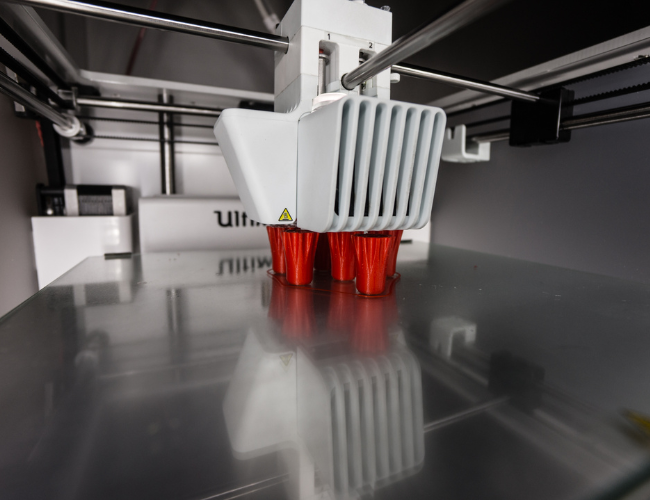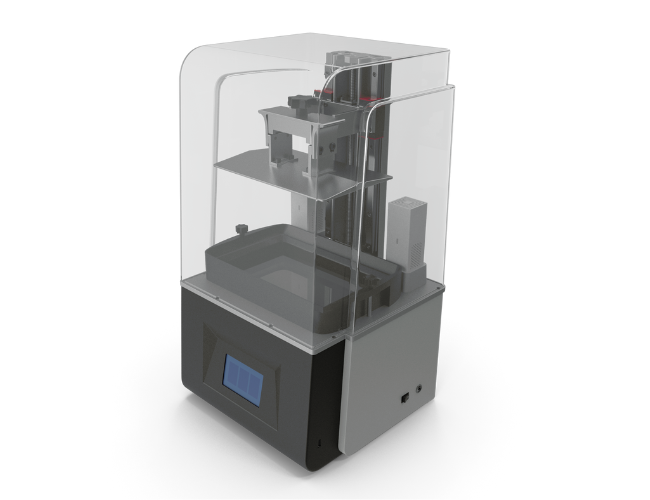3D Printing
Services
The evolution of 3D printing (also known as additive manufacturing) has transformed the landscape of product development and manufacturing. Let’s delve into the exciting implications:

Design Benefits:
Beyond Prototyping: Traditionally, 3D printing was associated with prototyping and conceptual design. However, it has now transcended those boundaries. Additive manufacturing is no longer limited to creating mock-ups; it’s a powerful tool for producing functional parts directly.
Efficiency and Iteration: Rapid prototyping using 3D printing allows for swift iteration cycles. Here’s how it works:
Functional Prototypes: Designers create functional prototypes using 3D printing. These prototypes closely resemble the final product.
Iterate and Refine: Teams can iterate quickly, making design adjustments based on real-world testing and feedback.
Minimal Overhead: Unlike traditional methods that involve expensive molds or tooling, 3D printing incurs minimal overhead costs.
Tailored Solutions: 3D printing enables mass customization. Each part can be unique and customized to specific requirements.
Complex Geometries: Designers can create intricate shapes and structures that were previously challenging or impossible to manufacture conventionally.
Lightweight Designs: For instance, aerospace companies use 3D-printed components to reduce weight without compromising strength.
Time-to-Market: By eliminating toolmaking and fabrication steps, 3D printing accelerates product development.
Streamlined Workflow: The seamless transition from design to production saves valuable time.
Maintenance and Spare Parts:
On-Demand Production: In the field, 3D printing allows for on-demand production of spare parts.
Reduced Inventory: Companies use 3D printing to create spare parts reducing the need for extensive spare parts inventories.
Material Variety: The range of materials available for 3D printing continues to expand—aluminum alloys, medical-grade polymers, and more.
Innovations: New generations of 3D printers overcome limitations, allowing overhanging parts and controlled fiber reinforcements.
No longer on the sidelines, 3D printing has now moved to center stage in manufacturing. It’s not just about prototypes; it’s about revolutionizing how we create functional, customized, and efficient products.
Fused Filament Fabrication (FFF) Printing
Fused Filament Fabrication (FFF) is a process of building an object by depositing melted material layer by layer. The deposition is carried out in a specific manner dictated by a dedicated program (slicing software). This technology employs a special kind of 3D printing material — a filament — made from plastic. A wide variety of filament materials are extruded, including thermoplastics such as acrylonitrile butadiene styrene (ABS), polylactic acid (PLA), polyethylene terephthalate glycol (PETG), polyethylene terephthalate (PET), high-impact polystyrene (HIPS), thermoplastic polyurethane (TPU) and aliphatic polyamides (nylon).
File types accepted are: .stl, .stp. & .obj

Stereolithography (SLA) Printing
Stereolithography (SLA) is a form of 3D printing technology used for creating models, prototypes and production parts in a layer by layer polymers. Those polymers then make up the body of a three-dimensional solid. The liquid materials used for SLA printing are commonly referred to as “resins”. Standard resins, for general prototyping Engineering resins, for specific mechanical and thermal properties, Dental and medical resins, for biocompatibility certifications. One of the advantages of stereolithography is its speed; functional parts can be manufactured within a day. Prototypes and designs made with SLA are strong enough to be machined and can also be used to make master patterns for injection molding or various metal casting processes.
File types accepted are: .stl, .stp. & .obj

Resin (SLA) Printing vs. Filament (FFF) Printing
Let’s explore the differences between FFF (Fused Filament Fabrication) and SLA (Stereolithography Apparatus) 3D printing:
Resin (SLA) Printers:
· High-precision, accurate parts
· Production-level parts
· Functional prototypes
· Medium-volume production

Filament (FFF) Printers:
· Lower cost
· Quicker prototypes
· Easy, smaller parts
· Proof of concepts

Resolution: SLA prints offer better resolution and smoother surfaces due to a high-precision laser, while FFF prints have more variation in line thickness and rougher surfaces.
Material Options: FFF printers support hundreds of materials, whereas SLA printers are limited to less resin types.
Ease of Use: FFF printers are easier to use and more widely available than SLA printers.
Costs: FFF printing is cheaper and requires less maintenance, while SLA printing is more expensive, both for upfront and for ongoing costs.
Build Volume: FFF printers can handle larger builds compared to SLA printers.
Surface Finish and Quality: SLA printers provide superior surface finish and quality.
In summary, if you prioritize high-resolution prints and are willing to work with limited material options, SLA might be your choice. On the other hand, if versatility, speed, and a broader material range are essential, FFF is a better fit.
